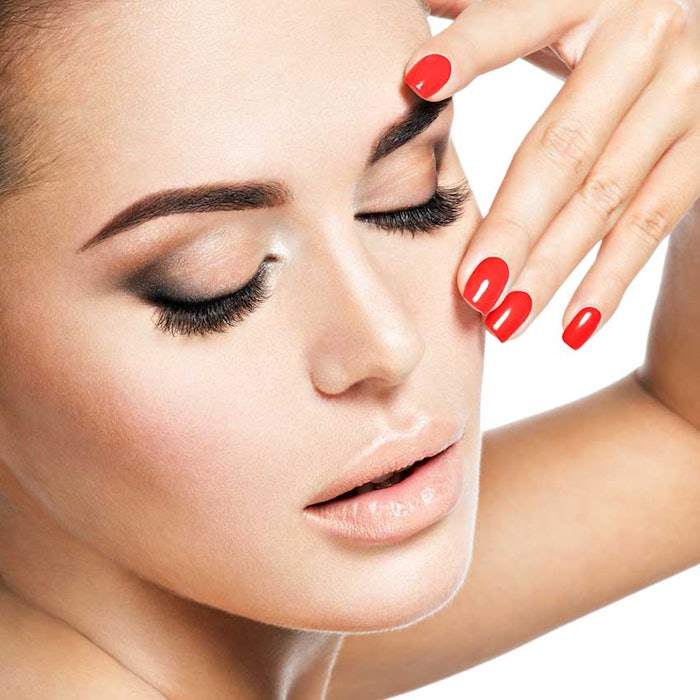
The popularity of the anti-aging market pushed this segment through the economic downturn in recent years, supporting growth. The aging consumer’s increasing demand for more effective and creative anti-aging solutions also has led to a continued drive in innovation on behalf of both raw material suppliers and personal care product manufacturers. The market has responded with a number of technologically advanced topical products, but the shadow and bagginess that plagues the aging under-eye area remains a target for many scientists.
Enter Living Proof, a company that started in the personal care space with a hair care polymer. After identifying the unmet need for an efficacious, immediate solution for the aging under-eye area, the company’s team, including Betty Yu, Ph.D., vice president of skin care and new material discovery, moved into the skin arena with the identification of a novel silicone polymer technology.
The Discovery
When the research team first sought to create an effective treatment for under the eyes, its advisor, dermatologist Rox Anderson, MD, asked himself, “What is the quickest way to make someone look better? How do we have a magic bullet?” The answer he came to, from all his evaluations of patients and examples, was elasticity. Simply put, as skin ages, it loses elasticity. Yu, then, began evaluating technologies to find a safe, topical, noninvasive material that immediately made skin more elastic.
“As far as the discovery process goes, no one likes to recreate the wheel,” explained Yu. “But in surveying the broad landscape of materials out there, and finding [those having] maybe one attribute we were looking for, and never really finding that one [ideal] material, we decided just to make our own,” said Yu.
Cross-linking Polymers
What the company created was Strateris, a two-step system wherein a proprietary dispersion of functionalized polydimethylsiloxane polymers in an aqueous medium is applied to the face and then activated with a w/s emulsion that causes the polymers to cross-link and form a flexible film. This film reduces the appearance of aging under the eyes until it is removed.
The question then became how does the polymer film improve the appearance of that region. “This film contours to the skin under the eye, tightening to reshape the surface as well as flattening the herniated fat pad in the lower eye region to reduce its aged appearance. It is sort of a compression effect,” she noted. “Panelists saw a dramatic effect that is immediate and visible. They felt younger and more alert.”
Unlike other tightening polymers on the market, Yu notes that this technology is flexible and breathable, allowing for personal expression. Yu elaborated, “The biggest difference is elastic recoil. Most of the polymers on the market form a rigid film upon application to the skin. Therefore, the consumer is not able to express themselves, and as soon as they so, the product cracks and flakes off.” Elasticity is important for recoil as well as for expression.
“The second point of difference is that the cross-linking happens on the skin versus trying to apply something that has always been cross-linked,” added Yu. She explained it is virtually impossible to deliver an elastic film material directly on the skin. “This polymer system is flowable, so it goes on like a cream and the user can activate it when they want to initiate the cross-linking reaction.”
Yu highlighted that an additional benefit of the film-forming technology is its hydrating effect. “The film is invisible and breathable, but it reduces TEWL when it is worn, resulting in a hydrating effect,” she explained, adding “clinical studies have shown that the [system’s] skin hydration outperforms leading department store moisturizers.”
Skin Effect and Future Targets
Yu emphasized that the film improves the elasticity of under-eye skin only while it is being worn. “The elastic nature of the film is really creating that bounce-back effect, so it is not changing the elasticity of the underlying skin or the skin biology,” she noted. When the film is removed, skin returns to its original position; however, this tightening effect without an active is what makes the technology unique, according to Yu. “It is the only product where the appearance of skin can be changed topically without incorporating an active.”
She continued, “You have the ability within an hour to affect the appearance for a more youthful look without waiting on an active.” Upon activation, the skin’s texture becomes smooth and within the course of 20 min, the fine lines are addressed. Depending on the severity of under-eye bags, it may take somewhere from 30 min to 1 hr to see complete results. “Interestingly, panelists reported that they look better and better as they approach the peak performance time,” concluded Yu.
The technology will initially launch as a two-part system in dermatologists’ offices. Yu finds that the expertise of dermatologists, who often perform pinch tests to assess skin elasticity, will help explain the product to consumers and identify how it may help them. Since Strateris is a technology platform, its properties can be customized to the target application. Therefore, it can be tailored in the future for other application sites on the face, which the company has in the pipeline.










